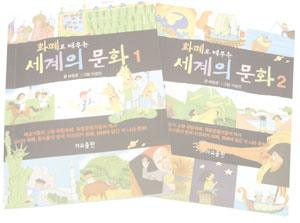A world tour, investigating the cultural differences through currency
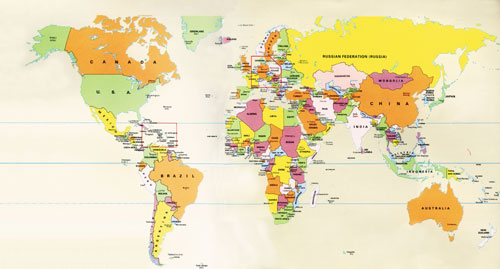 | ||
Now, in a world where economic interchange frequently takes place, currency has become the one and only economic unit. Money has now become a symbol of a country, latently revealing its cultural, social, political and historical features. With such significance, it is noteworthy to investigate the cultural differences by comparing each country's economic representative; currency.
Inside the money lies the world 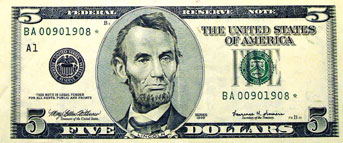
The world is formed by five oceans and six continents. Enormous in size, there is a huge financial burden that follows when going on a world trip. However, without any economic worry, one can now go on a different but another valuable world trip, simply by investigating the currency of each nation. Currency, which is used as an economic trade unit, is now being used as a tool to scrutinize each country's cultural, political and social differences.
Out of the six continents, the first stop would be North America, currently home of the global leading power, the U.S. In a country which has always exceptionally strived to be the best, Americans have considered leadership as one of the most important merits in enhancing its national status. As Americans put great emphasis on leadership and politics, most of its dollar bills are designed with the portraits of famous presidents. In the five dollar bill, for instance, Abraham Lincoln is printed, symbolizing his great historical deed; the emancipation of slaves. For good or bad, U.S. presidents have greatly changed and influenced the political arena. These contributions that are obliquely revealed on the U.S. dollar bills clearly reflect the nation's political history.
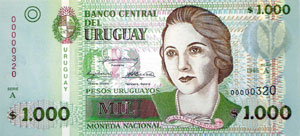 | ||
Adventure to the Safaris
Out from the Americas, Africa is the next stop to adventure in. To many people, the first image of Africa would be a world of animals. Consequently, most African countries have imprinted animal images on their currency. For instance, on the rand bill of the Republic of South Africa, there is a picture of elephants. Regarded as a symbolic continent of animals, many people visit Africa to see the animals in real life, enabling Africa to grow into a huge tourist continent. According to the WTO (World Tourism Organization), Africa's tourism industry has gradually expanded during the past couple of years, experiencing a 4.6% increase in international tourism in 2001. Thus, animal imprinted currency has been used not only as a means of representing Africa as a nature friendly continent but also as a commercial continent emphasizing its tourism industry. This differs from other countries like Nepal, an Asian country, where animal images on the currency reflect its worship of animals.
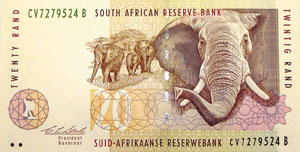 | ||
 | ||
Welcome to the United artistic nations
Moving from the venturous continent, Africa, the next destination is Europe, the land of art. Europeans love and esteem their culture and have always filled their currencies with pictures of famous authors, mathematicians, musicians and artists. Before the Euro, France had a portrait of Antoine de Saint Exupery, the author of "the Little Prince" along with a small image of the little prince. Germany had a picture of the famous mathematician, Gauss and a graph next to him. However, the EMU (European Economic Monetary Union) unified 12 European states' currency to the euro in 2002 and many issues followed. In standardizing the currency, it was challenging for the EMU to select a specific person to imprint on the currency that could stand for all twelve countries. Thus, the European states focused on ways to represent themselves as one because they did not view this as a competition measuring their national strengths, says Bae Won-jun. European countries finally came up with images of "bridges" that symbolize the connection among all 12 nations. From Byzantine to Renaissance, the historical and cultural features of Europe are also chronologically shown on the currency through the change in construction style. With the new currency, Europe is now assimilated and becoming similar in many ways, identifying itself as one. Moreover, Europeans now have no need to exchange money when moving from one country to another and can easily compare their economic status.
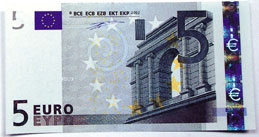 | ||
Mysterious land, Asia 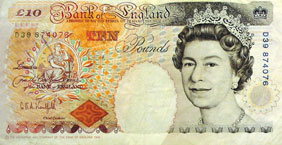
Contrary to Europe, Asia is separated in terms of its currency. Countries within the continent still lay focus on their individual characteristics. However, they still have some common traits in the sense that they are indigenous to Asia. Many Asian currencies are filled with portraits of people who fought for independence and pictures of students studying. In the case of the Philippines, the portrait of Quezon, Maruel Luis, who prepared the groundwork for independence and ultimately became the president, is imprinted on its currency. This portrait celebrates the importance of its independence, which is a remarkable footnote in Philippines' history.
Along with these portraits, there are also pictures of students on the Asian currencies for various reasons. For instance, in Vietnam, where the majority of children can not receive an adequate education due to their agricultural obligations, the pictures of students are imprinted as a means of emphasizing the importance of education. Another Asian country, Singapore, has also emphasized the importance of education by inserting a picture of a group of students. However, Singapore selected this picture to emphasize not only the importance of education, but also the importance of preserving its own language. The situation is understandable because Singapore's native language is currently endangered by the use of its secondary language, English. In regard to these countries, the importance of education is emphasized throughout Asia.
Unlike other countries where the images characterize each nation, India has revealed its uniqueness by inscribing the monetary unit in 16 different languages. This inscription clearly portrays India as a multi racial nation where 16 different languages are used in each province.
Korea, an Asian country to explore 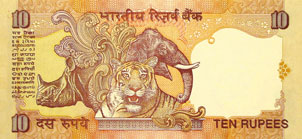
Among other Asian nations, Korea has established its current symbolic currency through three major currency reforms. According to KOMSCO (Korea Minting and Security Printing Corporation), the three major currency reforms were in 1950, 1953 and lastly in 1962. As the Korean War broke out in 1950, a new currency was issued to prevent excessive money circulation that directly affected the Korean economy. In 1953, the monetary unit was changed from won to hwan at a 100:1 ratio due to inflation. The last currency reform took place in 1962 and hwan was once again inverted to won at a 10:1 ratio, which is the current monetary unit.
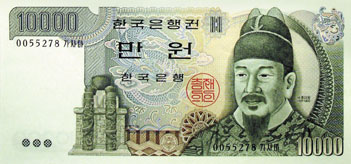 | ||
Look around and experience it
As globalization takes place, people now have more opportunities to encounter the currencies of different nations. Consequently, more and more people are collecting currencies from the countries they had been to and some are even becoming fervent collectors of outdated currencies. With the rise of interest in currency, world currency exhibitions are organized by many banks and even by private collectors like Bae Won-jun. By visiting these exhibitions or simply having a look at the left over foreign coins from one's trip, the cultural differences can be learned in a more creative and interesting way. Now is the time to grab this fortunate ticket that leads everyone to a costless and time-saving world trip.
Interview Bae Won-jun Assistant General Manager of the Financial Transaction Settlement at the First Bank Q : How did you start collecting foreign currency? A : I started out by collecting the currencies of the countries I visited. However, as I became an employee of the First Bank in 1984, I started to collect more currencies to show the customers what countries there are next to the ones they wanted to visit. Since it was hard to travel abroad 20 years ago, it provided a great opportunity for the customers to realize the various countries that are present in the world.
| ||||||||||||||||||||||||



